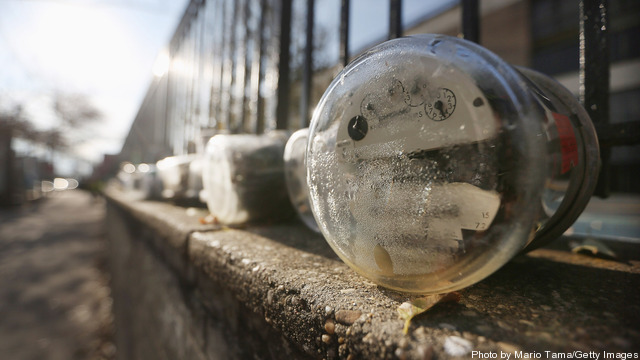
Some US utilities could have weathered Hurricane Sandy better than they did if they had invested in smart grid improvements such as smart-metering, outage management, and distribution management systems, a senior GE official said.
John McDonald, Director of Technical Strategy and Policy Development for GE Digital Energy, said utilities that have not yet installed the technology would have known about outages more quickly, been able to swiftly identify their locations, and been able to assign repair crews more efficiently if they had the enhancements in place.
Smart metering, for example, gives utilities instant information about the location and duration of outages rather than forcing them to rely on phone calls from customers, McDonald said.
And a geographical information system (GIS) provides users with digitized maps and geographical coordinates of assets such as substations or individual houses to allow speedy identification of problem areas and dispatch of crews to them.
“Not all utilities have invested in those technologies,” McDonald told Breaking Energy. “They are not as up to date and effective as they could be.”
But he cited PPL, based in Allentown, Pa., as a utility that operates four essential smart-grid components: meters, outage and distribution management systems, and GIS, and has integrated them to get the greatest benefit.
“They are in the best position when the storm hits and comes through their service area,” he said.
According to the Edison Electric Institute, PPL has met its target of installing smart meters for 1.4 million customers.
You can look at critical parts of the system that you don’t want to lose,”
The storm knocked out power to as many as 10 million people in 21 states, by far the biggest disruption in the history of the U.S. utility industry, according to EEI.
In May 2012, there were no smart meters installed in the territories covered by PSE&G of New Jersey and Consolidated Edison of New York – among the areas hardest hit by Sandy – according to an EEI survey.
In New York, Con Ed was planning a 1,500-meter pilot program for customers in northwest Queens but had not installed any of the meters at the time of the survey, while PSE&G had received approval from the New Jersey Board of Public Utilities to install 17,500 smart meters in three Passaic County towns, the EEI data show.
Nationwide, utilities had installed about 36 million smart meters, a number that’s projected to rise to 43 million by the end of 2012 and 65 million by 2015, according to the EEI, which is updating the data. It projected that by the end of 2012, 22 utilities in 16 states will have deployed smart meters to all 29 million customers.
EEI, the trade group representing shareholder-owned utilities, cited enhanced outage restoration as one of the benefits of smart meters.
At New York’s 30 Rockefeller Center, the lights stayed on throughout Hurricane Sandy because the skyscraper is equipped with an uninterruptible power supply that calms fluctuating voltages and backs up the system with batteries in the case of power failure, said McDonald.
Despite the resilience of buildings such as 30 Rockefeller Center, the magnitude of the storm and the extensive power outages that followed have led utilities and their customers to examine their ability to withstand future weather-related disasters.
“Customers should ask themselves: would they have been able to do a better job with more investment in technology?” McDonald said. In assessing their future preparedness, utilities should examine what preventive measures they can take, along with how to respond during a storm, and how best to cope with power restoration after the storm passes.
“You can look at critical parts of the system that you don’t want to lose,” he said.
McDonald argued that the initial cost of installing the smart-grid technology and training employees to use it will be easily and quickly outweighed by the benefits in terms of lower costs for power restoration and the favorable publicity that comes with being able to ensure that the lights come back on quickly after a storm.
“The benefits are going to be much greater than the costs and the payback period will be very reasonable,” he said.
